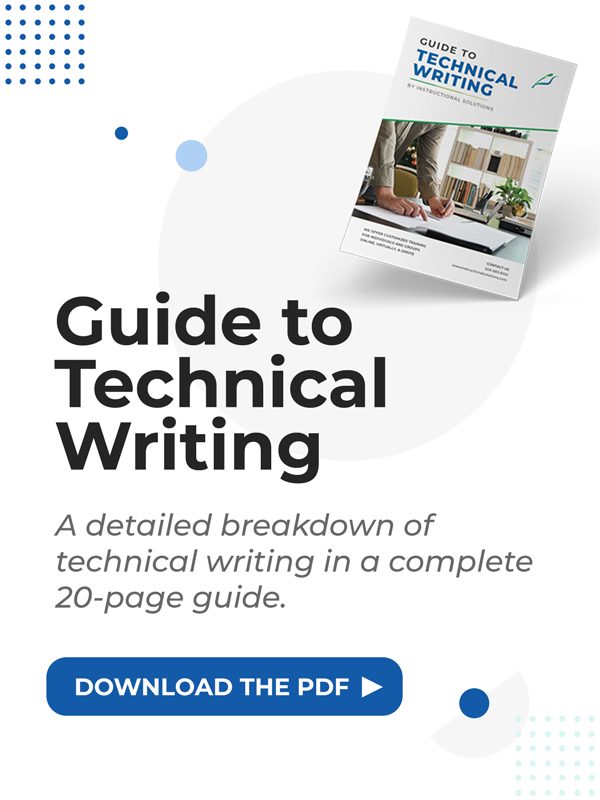How to Write a Software Specifications Document (SSD) – Step-by-Step Guide

Originally published July 19, 2024, updated May 29, 2025
.png)
Table of Contents
A well-written Software Specifications Document (SSD) is the cornerstone of successful software development. It serves as a blueprint for the entire project, outlining the functionalities, requirements, and expectations for the software being built. A clear and concise SSD ensures streamlined communication between stakeholders, minimizes development risks, and ultimately leads to a product that meets the needs of its users.
This guide will equip you with the knowledge and tools to develop a technical report to create an effective software specifications document.
Understanding the Purpose of an SSD
- Defining Functionality: The SSD clearly outlines the software's intended functionalities and features. It details what the software is designed for, how it will perform those actions, and the expected user experience.
- Setting Requirements: The document establishes the software's specific technical and non-functional requirements. This includes hardware compatibility, software dependencies, performance benchmarks, security considerations, and user interface (UI) design guidelines.
- Managing Expectations: The SSD sets clear expectations for the development team and project managers. It defines each software feature's project timelines, deliverables, and acceptance criteria.
- Documentation for Future Reference: The SSD is a vital reference document throughout the software development lifecycle (SDLC) and beyond. It provides context and clarity for developers, testers, and future maintenance teams.
Learn how to write technical documents effectively and improve your career.
Learn MoreThe Importance of an SSD
A Software Specification Document (SSD) is a fundamental blueprint in the software development lifecycle. Its importance lies in providing clear guidelines and a comprehensive framework for developers, designers, and stakeholders. An SSD ensures that everyone involved has a unified understanding of the system's objectives, functionalities, and constraints.
By meticulously detailing requirements, user interactions, data flows, and integration points, the SSD minimizes the risk of misunderstandings and misalignments. Additionally, it serves as a valuable reference throughout the development process, aiding in decision-making and ensuring consistency and quality. Ultimately, an SSD enhances project efficiency, reduces development time, and fosters a collaborative environment where all parties can contribute effectively to creating a successful software solution.
Key Components of an SSD
While the specific structure of an SSD varies depending on the project and methodology, here are some core components to include:
Introduction
- Project Overview: Briefly describe the software product's goals and target audience.
- Document Purpose: Explain the purpose of the SSD and how it will be used.
- Definitions and Acronyms: Define technical terms and acronyms used throughout the document.
Tip: Eliminate bloat by avoiding jargon. Check your writing against our jargon grader here.
Overall Description
- High-Level Functionality: Provide a high-level overview of the software's functionalities and features.
- User Needs: Outline the needs and expectations of the software project's users.
- System Interfaces: Describe external systems or software interfaces users will interact with.
Functional Requirements
This section outlines the specific functionalities the software must have to meet user needs. It translates user requirements into technical specifications for the development team.
- Use Cases: Use cases describe different scenarios in which users will interact with the software. Each use case should outline the steps involved and the expected outcomes. This ensures the developers understand every possible user interaction with the system.
- User Stories: User stories are brief descriptions from the user's perspective that outline how they will achieve specific goals using the software. These stories help keep the development process user-focused, facilitating the creation of a product that meets real-world needs.
- Feature List: A well-organized bulleted list of features is essential. Each feature should be briefly explained to provide context and purpose. This list acts as a quick reference guide for both stakeholders and developers.
Non-Functional Requirements
Non-functional requirements describe the software's qualities and attributes beyond its core functionalities. They are often as critical as functional requirements for the software's success.
- Performance Requirements: Specify performance benchmarks, including speed, response time, and scalability. For instance, define how quickly the software should process data or handle user requests. Performance requirements ensure the software can handle expected loads efficiently.
- Security Requirements: Define the security protocols that must be implemented. This includes access controls, data encryption methods, and measures to protect against vulnerabilities. Security requirements are crucial for safeguarding sensitive data and maintaining user trust.
- Usability Requirements: Outline the software's user interface (UI) and user experience (UX) goals. Usability requirements ensure the software is intuitive and easy to navigate, enhancing user satisfaction.
- Reliability Requirements: Specify the desired uptime, availability, and disaster recovery mechanisms. Reliability requirements are vital for ensuring the software's dependability and continuous operation.
Systems Architecture
Systems architecture is a foundational concept in technology and engineering that addresses complex systems' overall design and organization. It provides a guiding framework outlining the interactions between different components, subsystems, and modules to accomplish predefined goals.
- Hardware Infrastructure: Discuss the physical components necessary for the software, including servers, workstations, and network hardware. Detailing the hardware infrastructure helps ensure compatibility and resource availability.
- Software Stack: Outline the software components required, including operating systems, middleware, and other foundational technologies. A clear description of the software stack sets the stage for consistent development practices.
- Network Configuration: Describe the network setup, including topology, communication protocols, and security measures. Network configuration ensures that data transmission is efficient and secure.
- Data Storage: Address the data storage solutions, including databases, data warehouses, and storage protocols. Effective data storage planning is essential for data integrity and accessibility.
- Web User Interface (UI): Provide an overview of the web UI design, addressing layout, navigation, and responsive design principles. A well-thought-out UI design enhances usability and aesthetic appeal.
External Interfaces
Specifying the requirements of external interfaces is crucial for guaranteeing smooth integration, interoperability, and functionality of the software solution. This involves detailing the interactions between the software and external systems, databases, or APIs, including data formats and communication protocols.
- APIs: Define the software's APIs to interact with other systems. This includes specifying endpoints, request methods, and expected responses.
- Data Formats: Detail the data formats for exchanging information, such as JSON, XML, or CSV. Consistency in data formats ensures seamless data integration and processing.
- Communication Protocols: Specify the communication protocols, such as HTTP, HTTPS, or FTP, that the software will use for data exchange. Clear protocol definitions help prevent communication issues and facilitate smooth interactions.
Constraints
This section outlines any limitations or constraints that may impact the software's development. Identifying constraints early helps set realistic expectations and plan accordingly.
- Budget Constraints: Discuss the financial limitations that could influence the project's scope and timeline. Understanding budget constraints helps prioritize features and functionalities effectively.
- Hardware Compatibility: Address any hardware compatibility issues that may affect software performance or usability. Ensuring hardware compatibility prevents potential operational difficulties.
- Existing Infrastructure: Consider the current infrastructure and any constraints it may impose on the new software. This helps avoid conflicts and ensures smooth integration with existing systems.
Quality Assurance
Quality assurance is essential for delivering reliable and high-performing software. Define the testing strategy, outlining the types of tests and the expected outcomes.
- Unit Testing: Detail the unit testing process, which involves testing individual components for correct functionality. Unit testing ensures that each part of the software works as intended.
- Integration Testing: Describe the integration testing process, focusing on how different components interact with each other. Integration testing identifies issues that may arise from component interactions.
- User Acceptance Testing (UAT): Outline the UAT process, which involves testing the software with end users to ensure it meets their needs. UAT validates the software's usability and functionality from the user's perspective.
Project Deliverables
Clearly specify the deliverables expected throughout the development lifecycle, including code, documentation, test reports, and user manuals. Well-defined deliverables help track progress and ensure that all essential components are completed.
Appendices
Include any additional information that supports the SSD, such as detailed user interaction mockups, data flow diagrams, or external system specifications. Appendices provide valuable context and reference materials for the development team.
Reviewing and Validating the SSD
The process of reviewing and validating the Software Specifications Document is critical to ensuring its accuracy, completeness, and alignment with stakeholder expectations.
Internal Review
An internal review involves cross-functional team members, including developers, designers, testers, and project managers, examining the SSD to catch any inconsistencies or ambiguities. This collaborative process ensures that the development team clearly defines and understands all technical and functional requirements. During this review, each section of the SSD should be scrutinized to ensure that it accurately represents the project's objectives and scope.
Stakeholder Review
Following the internal review, the SSD should be shared with key stakeholders for their input and approval. Stakeholder review sessions provide an opportunity for users, clients, and other interested parties to give feedback on the documented requirements. Their insights are invaluable in ensuring that the document aligns with business goals and user needs. Any discrepancies or concerns raised during this review should be addressed and incorporated into the revised document.
Validation Techniques
Validation ensures that the documented requirements in the SSD are feasible and can be implemented within the project constraints. Techniques such as requirements walkthroughs, prototyping, and use case scenarios help validate the requirements by providing practical insights into how the system will function. These techniques can identify potential issues early, allowing for adjustments before development begins.
Peer Review and Audits
Conducting peer reviews and audits is another effective strategy for validating the SSD. Colleagues with experience in similar projects can provide objective assessments, ensuring that the SSD meets industry standards and best practices. Audits may also involve regulatory compliance checks if the software is subject to specific legal or industry regulations.
Final Approval and Sign-off
Once all reviews and validations are complete, all relevant parties should present the SSD for final approval and sign-off. A formal agreement ensures a mutual understanding of the project requirements and that any changes later in the development process are minimized. This final step solidifies the SSD as the cornerstone document that will guide the entire software development lifecycle.
Meet one-on-one with an instructor to review your software specifications document together.
Learn MoreBest Practices for Writing an SSD
- Clear and Concise Language: Use clear and concise language that both technical and non-technical stakeholders can understand.
- Focus on User Needs: When defining functionalities and requirements, keep the user's needs and expectations at the forefront.
- Prioritization: Prioritize features and functionalities based on their importance and business value.
- Detailed but Maintainable: Provide sufficient detail for development while maintaining readability and ensuring future updates are easy to implement.
- Version Control: It's imperative to have a single source for document development. Maintaining traceability within a development team ensures that each member can directly link to specific requirements, promoting transparency and accountability. This allows organizations to clearly understand how their work impacts others.
Work on Developing the Right Skillset
In today's competitive job market, skilled technical writers are in high demand as companies continue to rely on clear and effective communication. At Instructional Solutions, we've developed a technical writing course that strengthens writers' technical communication skills. Each lesson progressively improves a different facet of your technical writing skills, enabling you to develop a clear and helpful SSD for your company quickly. Register today for our Technical Writing Course.



